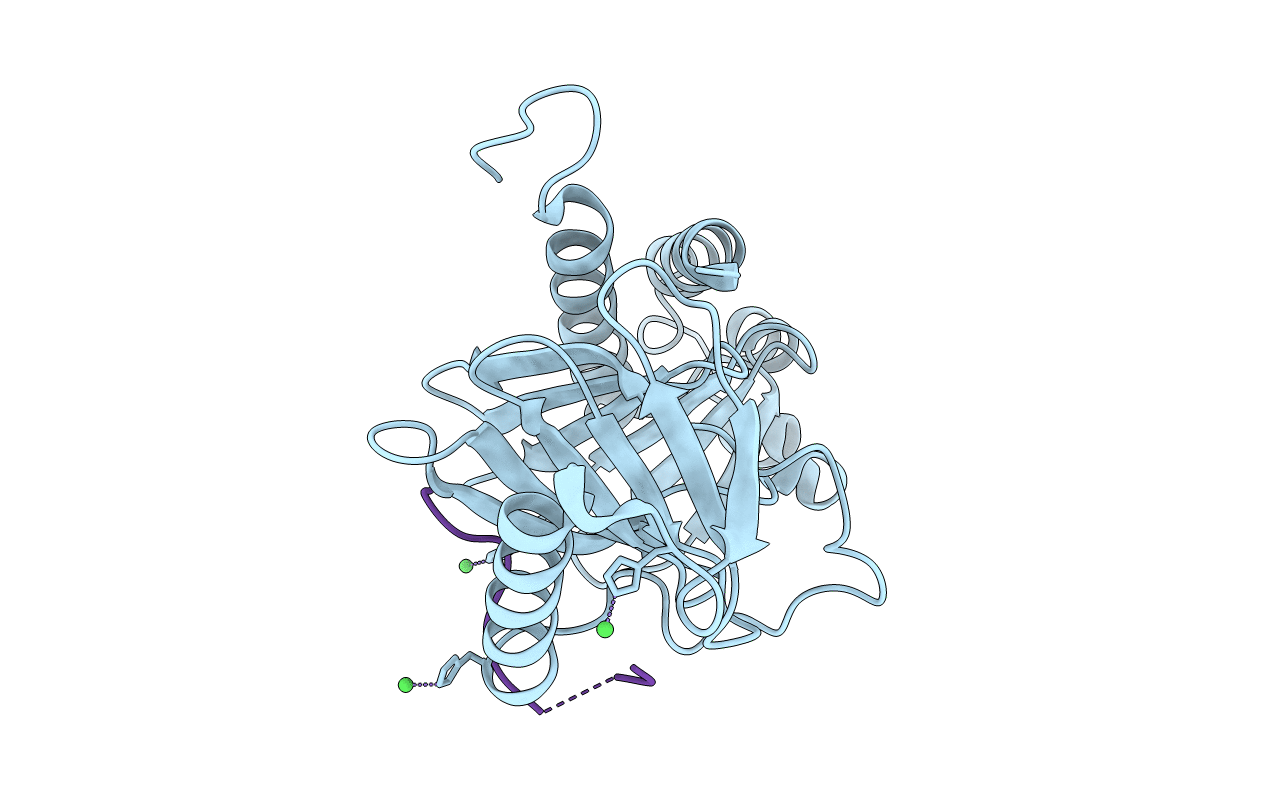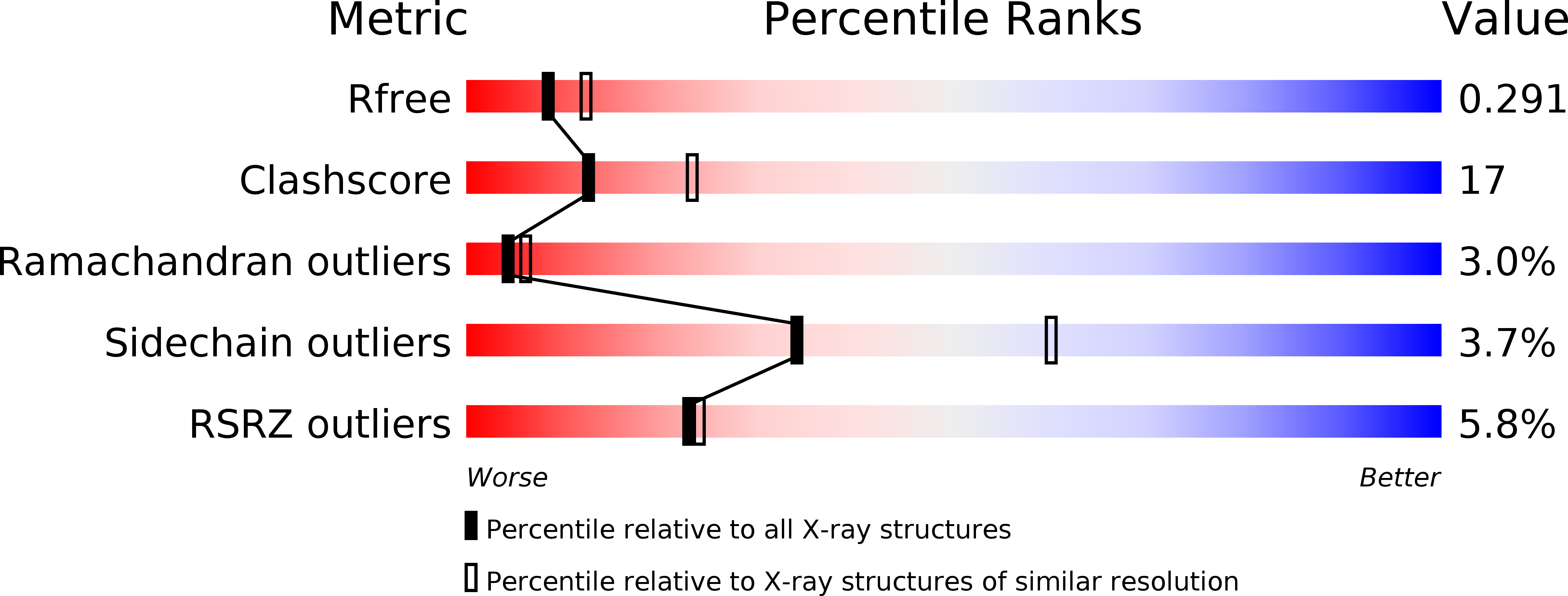
Deposition Date
2015-09-09
Release Date
2015-10-28
Last Version Date
2024-10-09
Entry Detail
PDB ID:
5DMV
Keywords:
Title:
Polo-box domain of Mouse Polo-like kinase 1 complexed with Emi2 (146-177)
Biological Source:
Source Organism:
Mus musculus (Taxon ID: 10090)
Host Organism:
Method Details:
Experimental Method:
Resolution:
2.50 Å
R-Value Free:
0.29
R-Value Work:
0.21
R-Value Observed:
0.21
Space Group:
P 1 21 1


